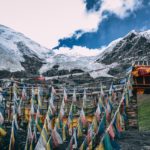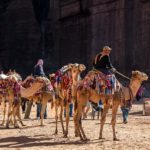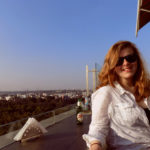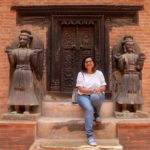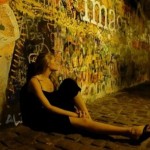Lhasa Tibet: The Real Deal with Cecilia Haynes
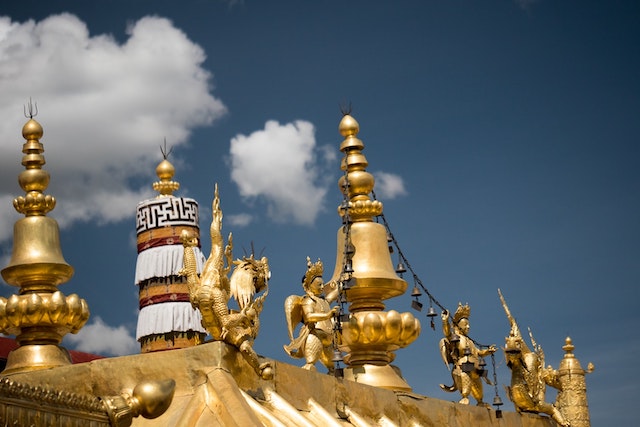
This month we’re interviewing women from all over the world and asking them about their experiences traveling to Tibet. We had the privilege of speaking with Cecilia Haynes about her experience traveling through Tibet. Here’s a glimpse into our conversation.
Tell us about yourself! What do you do when you’re not traveling the world? Where do you live? What made you decide to go to Lhasa Tibet?
I am a Third Culture Kid who was born in Hong Kong and grew up in India, China, the US, and the Philippines. I am a Content Marketer for Scrapinghub, and my work is 100% remote, so I end up bringing the office along with me on my world trippin’. I currently live in Florida, but tend to spend my winters and summers elsewhere. I’m actually headed to Hong Kong this summer, as well as a few other destinations.
When my significant other was a graduate student, I was able to visit Lhasa multiple times. He studies Buddhism and so we traveled extensively around Western China for his research, which allowed me to photograph our adventures.
Check out Pink Pangea’s Writing, Yoga, and Meditation Retreats.
How long did you go for? How did you spend your time?
I’ve been to Lhasa three times. The first trip was very short and I was only there for about a week. The second trip was much longer because I wanted to be able to visit areas outside of Lhasa. The third trip was also fairly short, about 10 days.
Each time I go, I enjoy the food (yak momos/dumplings are a must); the Barkhor Market that once sprawled in the streets surrounding Jokhang Temple (it was recently moved to a covered building); and the picturesque temples that litter the city.
What were your most memorable experiences? What were the biggest disappointments?
One of my favorite experiences, that I only got the last time around, was shopping for turquoise, and I don’t mean in a store. In certain areas of the old part of the city (ask your guide) there are groups of men who carry a wealth of turquoise, coral, and Dzi beads around their necks. You can actually buy individual pieces (or even a whole strand if you’re feeling flush). I would highly advise that you let your guide do the bargaining, though, since this is a group activity and it can turn a bit chaotic.
It was an incredible experience to go to Samye Monastery and to climb Mount Hepori. You will be out of breath and pretty exhausted by the end, but the view is spectacular.
Finally, I loved the trek I took to nomadic areas. It’s nice to get out of the city and just be surrounded by the wilderness (and quite a few yaks).
As for disappointments, I would say to avoid the zoo in Norbulingka Palace. It’s a very depressing place.
What do you wish you knew before you went?
The uncertainty of flights. Since the winds on the plateau can be really strong, I’ve had delays and cancellations that have really stressed me out, so plan accordingly. Other than that, there isn’t really anything that comes to mind since your guide makes sure that you are cared for. I would recommend that you pick up some Mandarin and maybe even attempt some Tibetan, just for ease of communication.
Any favorite restaurants/hotels/hostels/sites you’d like to recommend? Tell us what made them great!
I would definitely recommend Dekang Hotel. While it isn’t in the Barkhor itself, it’s close enough, has WiFi that was fairly reliable, and a wonderful restaurant downstairs (get the yak thukpa). The staff were always friendly and accommodating, and it has become my go-to hotel in Lhasa.
If you have the money or can splurge one night, head to St. Regis and discover what being pampered really means. The Gold Energy Pool is worth a dip, if you can get a pass for that. Also, when I was there, they used to hold a champagne ceremony where they would open a bottle by slicing it with a saber.
While Jokhang Temple is nice, I really enjoyed both Nechung Monastery and Drepung Monastery. They are on the outskirts of the city and you can even watch monks debate Buddhist philosophy.
Many of my favorite restaurants were little hole-in-the-walls, so it’s hard to recommend specific places. In terms of food and drink, I much preferred the cha ngarmo (Tibetan chai) to the yak butter tea. Again, yak momos are tasty and tsampa (closest description is like a barley dough) is definitely worth finding. While not traditionally Tibetan, Sichuan ma-la hot pot is everywhere in the city and should be on your must-try meals list.
If you are feeling bold, see if you can get some Yartsa Gunbu/Yarsagumba/D?ng chóng xià c?o (cordyceps). Marketed to the West as Viagra, this is actually supposed to be a cure-all and a way to boost your immune system. Seriously, don’t believe the Viagra hype; I spoke to over 15 different vendors in multiple areas of China who never once mentioned this as a benefit. They instead emphasized that Yartsa Gunbu should be taken after surgery.
Is there anything that women specifically should know before they travel to your destination?
Lhasa is a pretty safe city from my experience since there are police stations everywhere and, again, you will have a guide who takes you around. I would dress respectfully and conservatively, especially when going into temples.
Photo by Unsplash.


